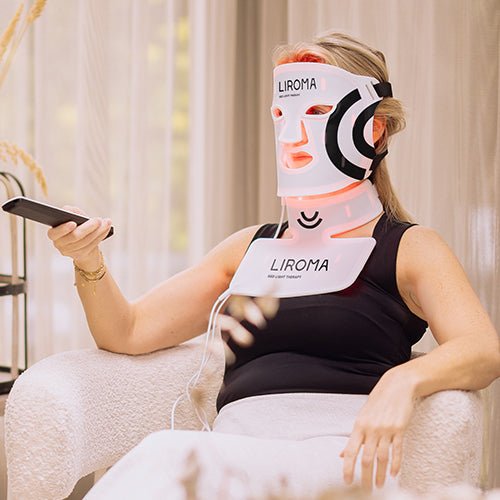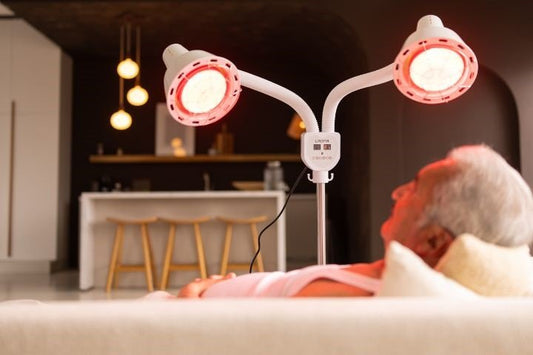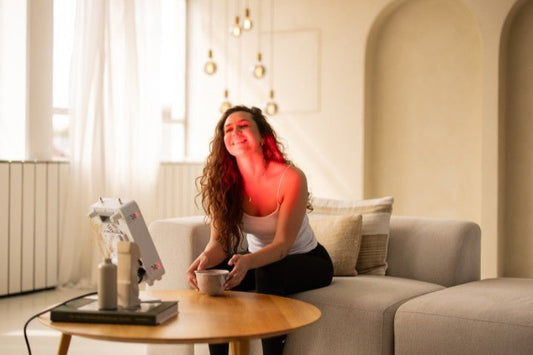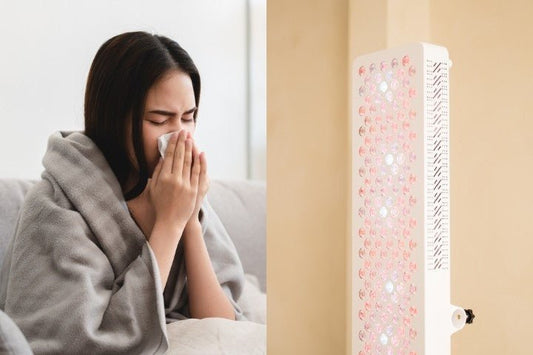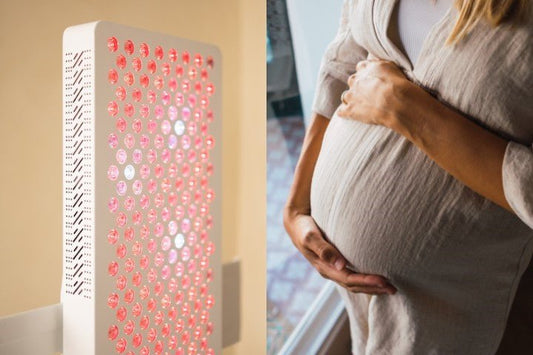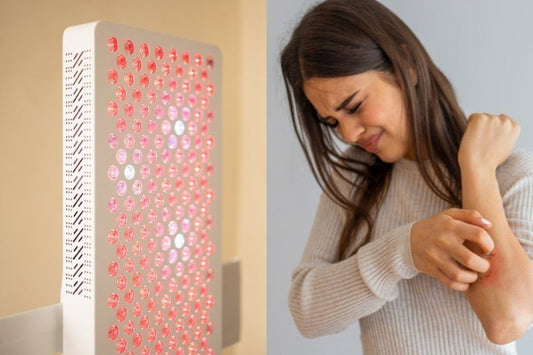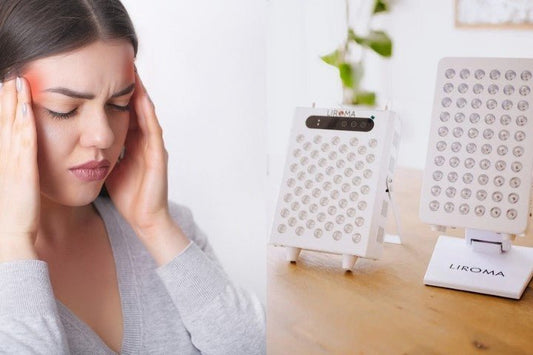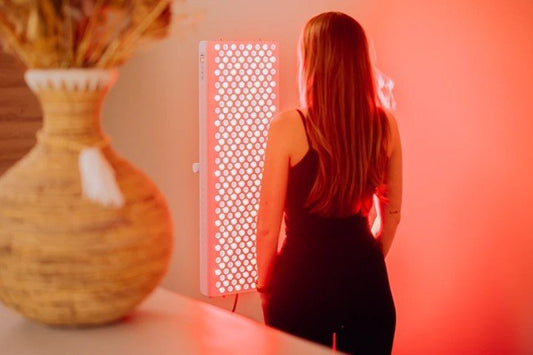Headaches or migraines can ruin your entire day. Whether you're dealing with a dull ache, throbbing pain, or frequent migraine attacks, finding relief can be a challenge. Fortunately, there's growing interest in a natural treatment option: red light therapy. In this blog, we explain what it is, how it works, and whether it might help you.
Note: The following text is not intended as medical advice. It is based on our own knowledge, customer experiences, and various online sources.
Table of Contents

Causes and Types of Headaches
Headaches, or cephalalgia in medical terms, come in many forms. Some are mild and go away quickly, while others can last for days and drain your energy. Here are the most common types:
Migraine
Migraine attacks are often severe and one-sided. The pain is throbbing and can last for hours or even days. They often come with nausea, light or sound sensitivity, and sometimes visual disturbances (auras).
Tension Headache
The most common type. A pressing, tight pain, like a band around your head. Often caused by stress, poor posture, or fatigue. It can occur occasionally or become chronic.
Cluster Headache
A rarer but extremely intense type of headache. Pain is usually around one eye and can occur several times a day. The eye may water and the nose may run or become blocked on the affected side.
Medication Overuse Headache
This form is caused by long-term or excessive use of painkillers. Headaches often subside once the medication is stopped, although withdrawal can be challenging.
Facial Pain (Trigeminal Neuralgia)
Sharp, stabbing facial pain, usually on one side. Often triggered by touch, cold air, or talking. It’s sometimes confused with headache because of its location.

How Can Red Light Therapy Help with Headaches?
Red light therapy uses specific LED light in the red or near-infrared spectrum. This light penetrates deep into tissue and stimulates cells to produce more energy (ATP). This accelerates healing processes in the body.
Red light therapy can help relieve headaches and migraines in several ways:
- Reduces inflammation: It lowers inflammatory substances that cause pain.
- Improves circulation: Muscles and blood vessels in the neck and head receive more oxygen.
- Pain relief: Nerve activity is regulated, reducing pain signals.
- Balances serotonin: This neurotransmitter plays a key role in mood and migraine.
Discover our red light therapy lamps

What Does the Science Say?
Plenty of research has been done on red light for headaches and migraines. Here are some notable findings:
- Sinus Headache (2011): Patients with facial pain experienced significant improvement after red light therapy, lasting up to two months.
- Chronic Tension Headache (2016): Pain dropped by 64% after a single session. Serotonin levels also increased significantly.
- Inflammation (2017): Red and infrared light may reduce cytokines—chemicals that drive inflammation and pain.
- Compared to Botox (2018): Both methods reduced migraine frequency. Red light had added benefits for sleep problems.
- Chronic Migraine (2019): Several patients experienced weeks or months without migraines after treatment.
- Light Sensitivity and Migraine (2022): Studies suggest that not light itself, but nerve hypersensitivity may be the trigger. Some light wavelengths can actually reduce migraine pain.
These studies are small in scale, but the results show a promising trend. More research is needed, but the outlook is positive.

Choosing the Right Light Panel
Not all red light devices are suitable for headaches or migraines. Effectiveness depends on a few key factors:
- Wavelength: Choose a panel between 650 and 980 nanometers. These wavelengths penetrate deep enough to reach nerves, muscles, and blood vessels. 660, 810, and 830 nm are commonly used for migraine.
- Irradiance: This is the power per cm². Too little won’t help, too much may cause irritation. Look for a well-balanced output—safe and effective.
- Panel size: Only treating your forehead or temples? A small panel will do. For widespread pain in head or neck, a larger panel is recommended.
Red Light for Headaches or Migraines: How to Use
At Liroma, we offer red light panels suitable for home use. Treatments are simple and pain-free:
- Frequency: 3 to 5 times per week
- Duration: 10 to 20 minutes per session
- Distance: Place the device about 15 to 30 cm from the skin
Note: The light should be used on clean, makeup-free skin. Always maintain a safe distance and keep eyes closed or use protective eyewear.

Frequently Asked Questions
Is red light therapy safe?
Yes. When used correctly, it is a safe and non-invasive treatment. It feels warm but doesn’t overheat or damage the skin.
How quickly will I see results?
Some users notice improvement after just a few sessions. Others may need several weeks. It depends on the person and frequency of use.
Can I combine it with medication?
In most cases, yes. Always consult your doctor if you're on migraine medication.
Is it suitable for everyone?
Red light therapy is generally safe, but pregnant women and people with epilepsy should consult a medical professional first.
Does it help with other issues?
Yes, it’s also used for muscle pain, inflammation, skin concerns, and fatigue. It supports the body’s natural healing process.







